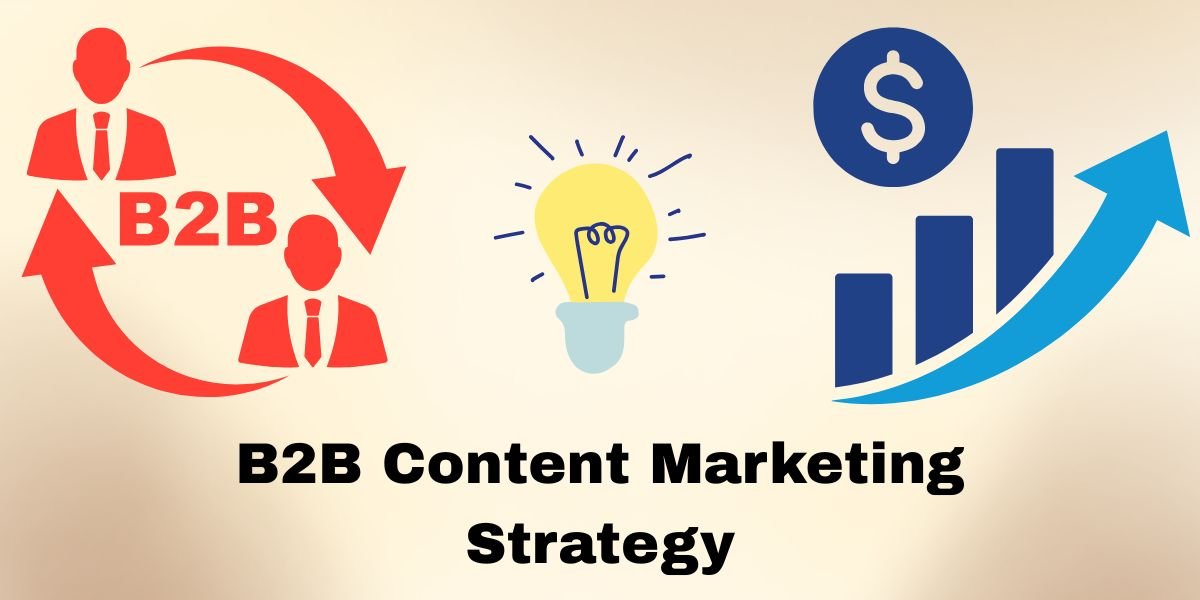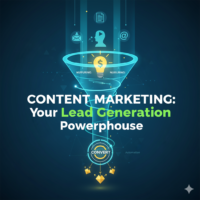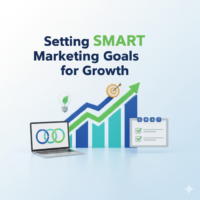How to Improve Your B2B Content Marketing Strategy in 2025
Published: 22 Sep 2025
In today’s competitive digital landscape, a well-crafted B2B content marketing strategy is more crucial than ever. Businesses are no longer just selling products; they’re building relationships, educating their audience, and positioning themselves as industry leaders. But with so much content, how can you ensure your B2B strategy stands out?

This article will show how to improve your B2B content marketing efforts. From understanding your audience to creating content that converts, we’ll walk you through actionable steps to help you drive more qualified leads and grow your business. Whether you’re new to content marketing or looking to refine your approach, you’ll find the insights you need here.
What is B2B Content Marketing and How Does It Differ from B2C?
What is B2B Content Marketing?
B2B content marketing is creating valuable content that attracts and engages other businesses. Instead of focusing on individual consumers, B2B content aims to connect with companies. The goal is to educate, build trust, and guide businesses through their buying journey. This type of marketing focuses on long-term relationships rather than one-off sales.
B2B vs. B2C: Key Differences
B2B content marketing differs from B2C (business-to-consumer) marketing in several ways. Here’s a breakdown:
- Different Audiences:
- In B2B, the target audience comprises decision-makers, such as CEOs, managers, or department heads. They are looking for solutions to their company’s problems.
- B2C targets a broad consumer base, often seeking personal needs or entertainment.
- Different Distribution Channels:
- B2B content is typically shared on LinkedIn, webinars, and industry-specific blogs. These are where business professionals go to learn and connect.
- B2C, on the other hand, often uses Instagram, TikTok, and other social media to create quick, engaging content.
- Different Content Formats:
- B2B uses long-form content like whitepapers, case studies, and detailed blog posts. These formats provide deep insights that help businesses make informed decisions.
- For quick consumer purchases, B2C focuses on short, snackable content, such as ads, social media posts, and product demos.
Why It Matters for 2025
Understanding these differences is key when crafting your B2B content marketing strategy. In 2025, businesses must cater to specific needs and deliver content through the proper channels. By tailoring your content approach, you’ll engage the right audience and drive more meaningful results.
The Role of Content Marketing in B2B Success: Why It’s More Important Than Ever
High ROI for a Low-Cost Channel
B2B content marketing continues to provide high returns with relatively low investment. Compared to other marketing channels, content marketing offers a strong ROI. Here’s why:
- Low Investment: Creating blog posts, whitepapers, and case studies doesn’t require a large budget.
- Sustained Impact: Once your content is published, it can continue to attract leads without constant funding or promotion.
- Long-Term Value: The content you create today can bring in new prospects for months or even years, making it a cost-effective choice.
Long Lifespan of Content
B2B content isn’t just effective in the short term; it has a long lifespan. Quality content can stay relevant and valuable long after it’s been published.
- Blog posts and guides can generate traffic and leads long after their original release.
- Case studies and eBooks can continue influencing decision-makers months or even years later. This long-lasting effect makes content marketing a sustainable strategy for businesses.
Build Trust and Thought Leadership
Content marketing is key to building trust and establishing your company as a thought leader in your industry. When you share valuable, informative content, you:
- Educate your audience about their challenges and solutions.
- Position your business as a trusted authority.
- Influence purchasing decisions by showing your expertise and understanding of their needs.
- Building trust through content can lead to long-term relationships with customers.
These advantages will make having a solid B2B content marketing strategy essential for business success in 2025. Content marketing isn’t just about selling—it’s about creating valuable connections that last.
Key Steps to Craft a Successful B2B Content Marketing Strategy
1. Define Your B2B Content Marketing Goals
You must first set clear, measurable goals to create a successful B2B content marketing strategy. Think about what you want to achieve. Do you want to:
- Generate more leads?
- Increase brand awareness?
- Drive more sales?
- Once you define your goals, you can align your content strategy to meet them. For example, if your goal is lead generation, you might focus on creating lead magnets like eBooks or webinars.
2. Know Your Audience Inside Out
Understanding your audience is crucial. Create detailed buyer personas to understand their pain points, needs, and challenges.
- What are their business goals?
- What problems do they face that your product or service can solve?
- Knowing your audience well allows you to create content that speaks directly to them.
3. Competitive Research: Understand What Works
Look at what your competitors are doing. Perform a competitive content audit to see what’s working in your industry.
- Which topics are getting the most engagement?
- Where are the content gaps you can fill?
- This helps you identify opportunities and stay ahead of the competition.
4. Map Content to the Buyer’s Journey
The buyer’s journey includes three main stages:
- Awareness: Create content that introduces your audience to the problem.
- Consideration: Provide in-depth information to help them evaluate solutions.
- Decision: Offer case studies or demos that help close the sale.
- Tailoring content to these stages helps nurture leads and guides them through the buying.
5. Leverage the Right Content Formats
Different types of content work best for B2B marketing. Use:
- In-depth blog posts for education
- Industry reports for the authority
- Case studies to showcase success
- Videos for engagement and storytelling
- Each format has its purpose in moving prospects closer to a decision.
6. Distribution: Maximize Your Reach
Content is only effective if it reaches your audience. Use the proper channels, such as:
- LinkedIn for business professionals
- Email to nurture leads
- Industry forums to share expertise
- Distribute content across multiple platforms to maximize your reach.
7. Measure and Optimize Your Content Strategy
Track the performance of your content regularly. Use analytics to measure:
- Website Traffic
- Engagement rates
- Conversion rates
- Based on the insights, optimize your strategy by adjusting content or focusing on the most successful types.
Example
Let’s say a company focuses on creating whitepapers for the awareness stage. By tracking performance, they realize that case studies lead to more conversions. They adjust their strategy to produce more case studies for the decision stage, improving their ROI.
This approach to a B2B content marketing strategy will help you refine your efforts and see better results over time.
Best B2B Content Marketing Practices for 2025
Focus on High-Quality Content
In 2025, high-quality content is more important than ever. Businesses are looking for value, not just sales pitches. To succeed, your content must be:
- Informative: Provide insights, data, and solutions.
- Authoritative: Build trust by sharing credible, well-researched information.
- Research-Driven: Take time to gather data and case studies. This boosts the credibility and relevance of your content.
Don’t just focus on promoting your product—solve problems and answer questions your audience is asking.
Diversify Your Content Formats
The days of relying solely on blogs are over. A mix of content formats will keep your audience engaged. Consider adding:
- Interactive Content: Quizzes, polls, and calculators keep your audience engaged.
- Podcasts: Great for in-depth discussions and thought leadership.
- Videos: Videos are easy to consume and work well for demonstrating products or services.
Each format serves a different purpose, and when combined, they create a comprehensive content strategy that caters to different audience preferences.
Optimize for SEO
No matter how great your content is, if it’s not optimized for search engines, it won’t be found. Focus on:
- Keyword Research: Use tools like Google Keyword Planner to find relevant keywords.
- On-Page SEO: Optimize headings, meta descriptions, and image alt-text.
- Meta Optimization: Write compelling meta descriptions that encourage clicks.
Effective SEO practices will help your content rank higher and drive more organic traffic.
Consistency and Frequency Matter
To keep your audience engaged, post regularly. Create a content calendar and stick to it.
- Consistency: Publish content on a regular schedule, whether it’s weekly or monthly.
- Frequency: Post frequently enough to stay at the top of your mind, but don’t overwhelm your audience.
Staying consistent builds trust and helps establish your brand as reliable.
Example
Here’s a simple tip: If you’ve created a comprehensive guide that’s been performing well, repurpose it into a webinar. This way, you’re offering the same valuable content in a different format, reaching a wider audience. This also helps reinforce your expertise and builds more engagement.
Following these best practices will set your B2B content marketing strategy up for success in 2025.
Top B2B Content Marketing Strategies You Need to Implement in 2025
1. Publish Detailed Industry Studies
One of the best ways to position your company as an authority is by publishing in-depth industry studies. These studies show that you understand your field profoundly and can provide valuable insights.
- Research-driven reports build trust.
- They demonstrate your expertise and attract more leads.
2. Send Targeted Newsletters
Email marketing remains a powerful tool for B2B companies. Sending personalized newsletters helps you stay connected with your audience.
- Share updates, new Content, or offers tailored to specific needs.
- This builds stronger relationships with your subscribers and keeps your business in mind.
3. Utilize LinkedIn for Thought Leadership
LinkedIn is still a goldmine for B2B content distribution. It’s a perfect platform for sharing articles, case studies, and industry insights.
- LinkedIn helps establish your company as a thought leader.
- Engaging with the right people can lead to valuable connections and opportunities.
4. Create Ultimate Guides for Your Niche
Long-form Content, such as ultimate guides, provides excellent value to your audience.
- These guides improve your SEO by ranking higher in search engines.
- They give your readers everything they need to know about a topic, positioning you as an expert.
5. Invest in Video Content
Video content is more engaging than ever. Tutorials, demos, and case studies can help you connect with your audience in new ways.
- Videos increase engagement and improve conversion rates.
- Show your product or service in action to make it more relatable.
6. Use Email Campaigns to Promote Content
Segmented email campaigns can help you promote specific pieces of Content to the right audience.
- This drives more qualified leads by targeting businesses that need your solution.
7. Focus on Transactional and Commercial Keywords
To drive sales and leads, focus on transactional keywords.
- These keywords signal that the user is ready to purchase or take action.
- Use tools like Google Keyword Planner to find the best ones for your business.
8. Experiment with AI-Generated Content
AI-driven content is becoming an essential part of content marketing.
- It helps create Content quickly while maintaining quality.
- You can boost efficiency and keep up with high content demands by experimenting with AI.
Incorporating these strategies into your B2B content marketing strategy will set you up for success in 2025.
How to Measure the Success of Your B2B Content Marketing Strategy
Key Metrics to Track
To measure the success of your B2B content marketing strategy, track key performance indicators (KPIs) such as:
- Website Traffic: Monitor the number of visitors coming to your site.
- Lead Conversion Rates: Track how many website visitors turn into leads.
- Engagement on LinkedIn: Measure likes, comments, and shares to understand your content’s reach.
- Social Media Shares: See how often your content is shared across platforms.
A/B Testing
A/B testing is crucial for refining your content.
- Test headlines, CTAs, and content formats to see which versions perform better.
- This will help you optimize your content for higher engagement and conversions.
Tools for Measuring Performance
Several tools can help you track and measure the impact of your content:
- Google Analytics: This is used to track website traffic and user behavior.
- HubSpot: This is used to measure lead generation and email marketing success.
- SEMrush: To analyze keyword performance and SEO effectiveness.
Iterate and Improve
It’s important to continuously refine your B2B content marketing strategy based on the data you collect.
- Utilize insights to refine your content, enhance SEO, and cater to your audience’s needs.
Example
A company noticed its blog posts weren’t converting well. After analyzing the data, it improved its CTAs and created more targeted content, which resulted in a higher ROI and more qualified leads.
Final Remarks
To build a successful B2B content marketing strategy, define clear goals and understand your target audience. Create high-quality, research-driven content that provides value and solves problems. Diversify your content formats and distribute them effectively across platforms like LinkedIn and email. Don’t forget to measure your performance using tools like Google Analytics and SEMrush to optimize your efforts over time.
Call to Action
Now, it’s time to take action. Use the tips shared in this article to refine and optimize your B2B content marketing strategy. Start implementing these best practices today, and watch your content deliver better results for your business.
Frequently Asked Questions
- B2B content marketing targets other businesses, focusing on professional, informative, and solution-driven content.
- B2C content marketing targets individual consumers, often using emotional appeals and direct calls to action.
- B2B content is more detailed and educational, while B2C content is typically shorter and designed for quick, emotional engagement.
- Track website traffic to gauge interest.
- Measure lead conversion rates to assess how well your content generates leads.
- Analyze engagement on LinkedIn and social media shares to see how widely your content is being spread.
- Use tools like Google Analytics, HubSpot, and SEMrush to track and analyze key metrics.
- Video content is more engaging and easier to consume than text-heavy content.
- It helps explain complex products or services in a simple and relatable way.
- Videos, like tutorials and case studies, can increase engagement and improve conversion rates by building stronger connections with your audience.
- Consistency is essential, so create a content calendar to plan your schedule.
- Publish regularly—whether weekly or monthly—depending on your team’s capacity.
- Keep the focus on quality over quantity, ensuring your content remains valuable and relevant.

- Be Respectful
- Stay Relevant
- Stay Positive
- True Feedback
- Encourage Discussion
- Avoid Spamming
- No Fake News
- Don't Copy-Paste
- No Personal Attacks

- Be Respectful
- Stay Relevant
- Stay Positive
- True Feedback
- Encourage Discussion
- Avoid Spamming
- No Fake News
- Don't Copy-Paste
- No Personal Attacks



